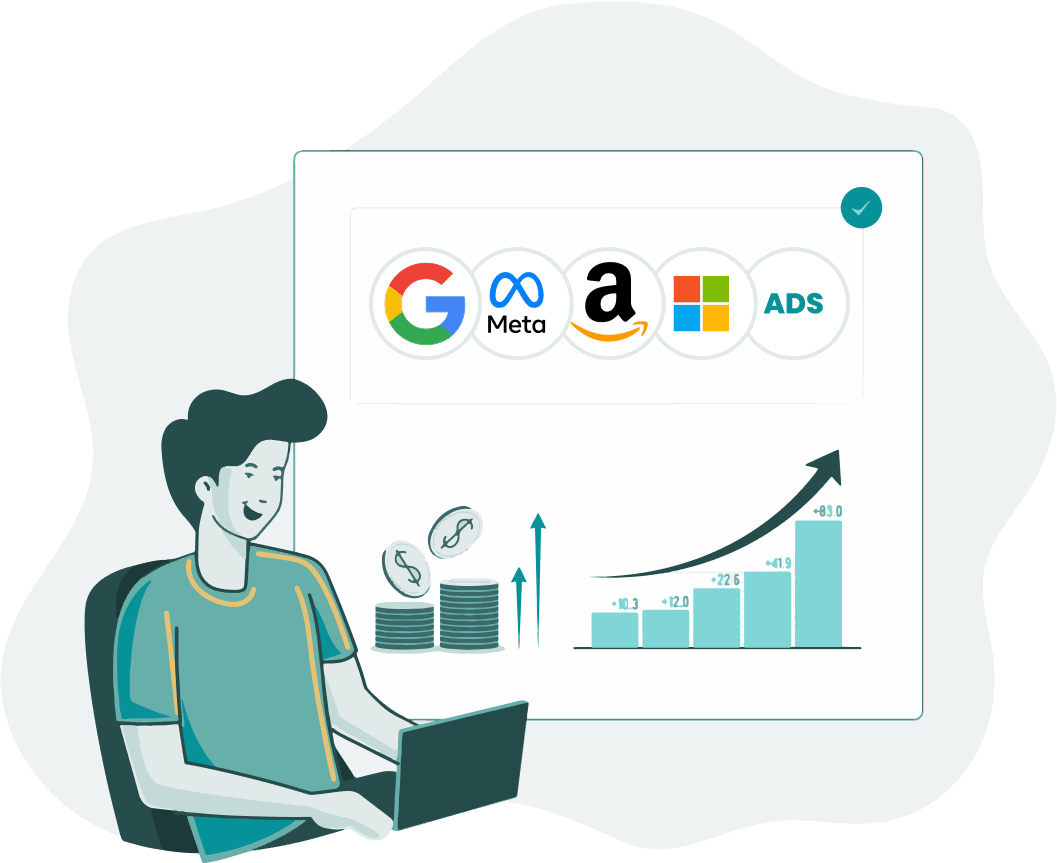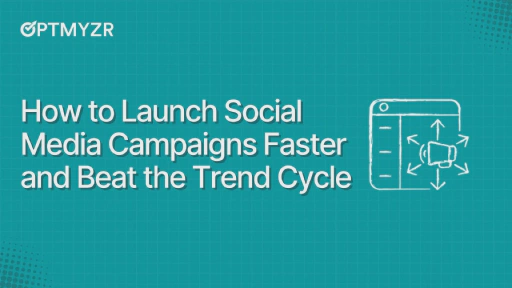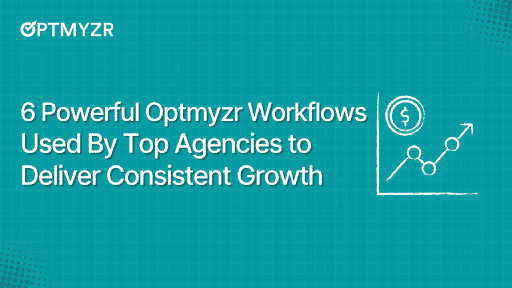If you’re someone managing Meta and LinkedIn Ads across multiple accounts, you’re juggling disconnected dashboards, duplicate reports, and platforms that refuse to play nice.
Budgets are shrinking. Costs are climbing. And you’re wasting hours just trying to answer one simple question: What the heck is working?
It’s not a tooling problem. It’s a fragmentation problem. And it’s badly affecting your performance.
Optmyzr fixes that. It unifies your paid social campaigns across Meta and LinkedIn, giving you one clean control center for strategy, reporting, and optimization. No more platform ping-pong. No more spreadsheet gymnastics. Let’s break down how it works—and how it puts you back in control.
1. The chaos: You’re managing ads in silos.
If you’re managing multiple Meta and LinkedIn Ads accounts across different regions or brands, you may be grappling with multiple logins, spreadsheets to reconcile, and performance trends scattered across platforms.
💡The fix: All Portfolio Dashboard
Optmyzr’s All Portfolio Dashboard brings all your portfolios into a single, centralized space. Each portfolio can contain any number of Meta and LinkedIn Ads accounts.
You get to visualize performance data and find optimization opportunities for ALL your accounts.
Plus, accounts can be grouped into portfolios based on brand, geo, funnel stage, or business unit. This simplifies the way you work.
📌Example: If you have Meta and LinkedIn ad accounts for Nike campaigns in the U.S., group them into one ‘Nike - US’ portfolio. This lets you track performance, budgets, and trends for all U.S. campaigns across platforms in one place. |
Similarly, you can group Meta ad accounts in different European countries into one portfolio— ‘EU Meta’. This lets you analyze and compare performance across the whole region instead of looking at each country or account individually.
Other key features of the all portfolio dashboard include:
- Custom date ranges and side-by-side comparisons → Track trends and analyze shifts over time.
- Customizable columns → Focus on the metrics that matter most to you.
- Built-in portfolio alerts → Get notified about underperformance or budget pacing issues instantly.
💡Pro Tip: If you want to avoid alert fatigue, use ‘Allowed Deviation’ in alerts to set a tolerance range around your target metric. This prevents constant alerts for minor, normal shifts in performance and helps you focus only on significant changes that may need action. |
2. The blind spot: You can’t see what’s actually driving results.
Smart decisions come from context. So you know which campaigns are performing. But do you know where the results are coming from and why they’re happening?
What you need is a way to compare key metrics like engagement rate, cost per unique user, and ROAS across platforms, portfolios, and time periods so you can pinpoint exactly where to invest for the best returns.
💡The fix: Cross-channel performance clarity
The portfolio dashboard provides clarity into cross-channel performance. You can filter by campaign type, customize date ranges, and build side-by-side views that make trends and gaps immediately visible.
📌Example: Imagine running Nike campaigns in France and Germany. The Portfolio Dashboard shows side-by-side performance: France has higher engagement, Germany has better ROAS. With these insights, you can reallocate budget to boost sales or optimize weaker campaigns. The dashboard provides a unified view for smarter, data-driven decisions. |
If you want to dig even deeper, the dashboard lets you:
- Use columns and widgets like Top Elements, Performance Change, and Platform Distribution to spot which channels, devices, or demographics drive value, and which fall short.
- Set up alerts to flag critical shifts.
- Breakdown campaigns by device and demographic level to fine-tune your strategy.
3. The reporting problem: You’re wasting hours on a slide that says nothing.
Every report is a copy-paste marathon. You’re juggling screenshots, CSV exports, and half-baked conclusions. And most of it isn’t actionable.
💡The fix: Automated, actionable reporting
With Optmyzr’s Reports, you can build reports quickly and easily. It features several pre-built, plug-and-play widgets that you can use to create comprehensive, performance-driven reports.
Here’s how you can use each of these widgets can be used in your reporting workflow:
1. Portfolio summary
Get a snapshot of overall account performance for a selected date range to highlight cross-platform results.
📌Example: If you're running awareness campaigns for a client on both Meta Ads and LinkedIn Ads, you can use this widget to compare how each platform performed during that time, all in one view. |
2. Performance comparison
Compare the performance of two segments of information, like two date ranges or different campaign types, for the accounts in your portfolio for the same date range.
📌Example 1: Compare how your Meta Ads account performed this month vs. last month to track improvement or spot drops in key metrics. This is a use case for time-based comparison. 📌Example 2: Evaluate how ‘Awareness’ campaigns on Meta stack up against ‘Brand Awareness’ campaigns on LinkedIn to identify which channel drives better visibility. This is an example ofa campaign type comparison. |
3. Time-wise stats
Break down performance by day, week, or month to spot trends and seasonality in your portfolio.
📌Example: You're reporting performance for the last 6 months. Use the Time Wise Stats widget to break down your portfolio’s results by month to quickly spot trends like rising CPC in February, a steady drop in conversions in March and April, etc. This way, you can link changes to specific campaigns or events. |
4. Top Campaigns in Portfolio
Identify high-performing campaigns by sorting and filtering based on your most important KPIs.
📌Example: Meta and LinkedIn lead gen campaigns side by side using key metrics like cost, conversions, and ROAS to quickly spot which ones to scale or fix. |
5. Top Ads in Portfolio
Drill down to your best-performing ads across accounts to double down on winning creatives.
📌Example: You review the top ads across your Meta and LinkedIn accounts in a portfolio. By including key metrics like click-through rate, conversions, and cost per conversion, you quickly spot which ads are driving the best results and identify underperforming ads to optimize or pause. |
6. Metric Trend Chart
Visualize performance trends for selected metrics over time using flexible chart options.
📌Example: Use the Metric Trend Chart to compare impressions and conversions over the last three months. By visualizing both metrics side-by-side, you easily spot periods where impressions rose but conversions didn’t, helping you identify when and why campaign performance dipped. |
7. Distribution by Accounts
Compare how each account contributes to total performance to identify strong or weak performers.
📌Example: You’re managing multiple client accounts in one portfolio. Using the Distribution By Accounts widget, you spot that Account A is driving 60% of your total conversions, while Account B lags behind. With this insight, you can focus your optimization efforts on underperforming accounts to boost overall results. |
4. The scaling struggle: You don’t know which ads to kill or boost.
When you manage Meta and LinkedIn ads together, it can get challenging to isolate which ads are driving results and which ones are draining your budget.
💡The fix: Ad Analyzer
The Ad Analyzer helps you drill down across multiple campaigns and platforms to easily spot your top performers, expensive ads, or those struggling to engage.
You just have to select the campaigns you want to review, and the Ad Analyzer will instantly show you key metrics like impressions, clicks, cost, conversions, and CTR—all in one customizable table.
Aside from this, with Ad Analyzer, you can:
✅Use preset filters like Top Spending Ads, High Converting Ads, or Ads with Declining CTR to narrow your view
✅Build custom filters tailored to your unique goals
✅Click any ad to open a side panel with a live preview, performance trends, and platform-specific insights like Meta’s Quality Score and placements
Simplify your social campaigns with Optmyzr.
When you’re running ads across Meta and LinkedIn across multiple accounts, it’s easy to get slowed down by scattered data and time-consuming reports.
But, with Optmyzr, you wouldn’t.
Optmyzr’s social ad management tools bring important insights and key metrics across different campaigns and accounts into a single, cohesive space. This way, you can quickly spot what’s working, fix what’s not, and make smarter decisions.
Try Optmyzr free for 14 days and explore how you can start managing Meta and LinkedIn Ads the smart way.









